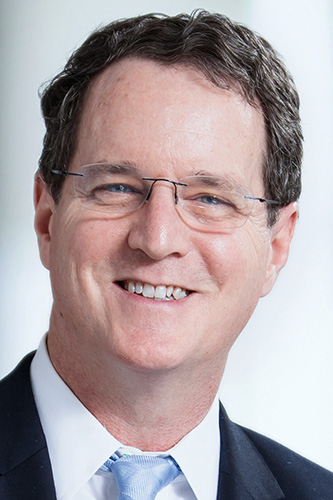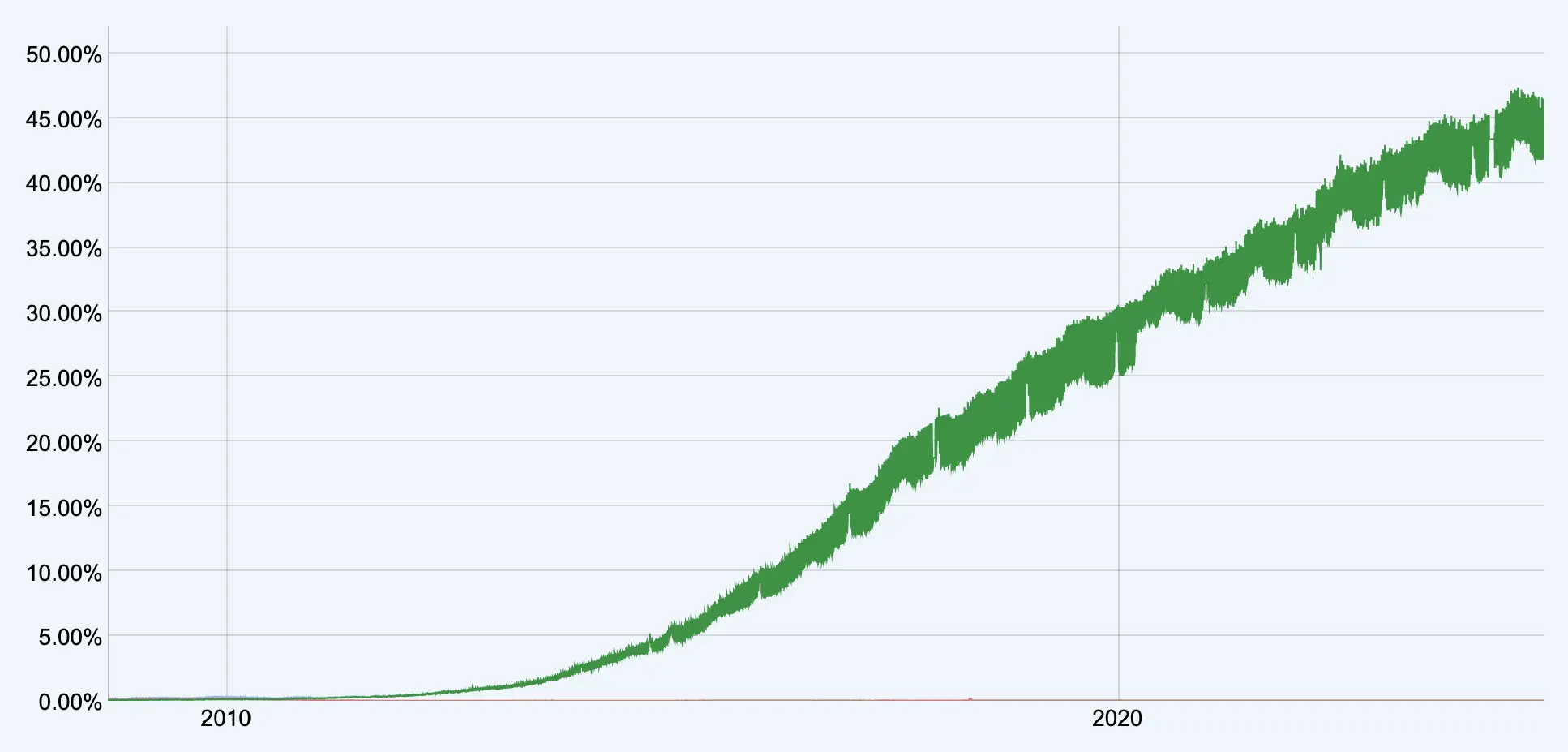

 The Internet has evolved from a scarcity-driven system into one defined by abundance, reshaping infrastructure, governance, and economic models while challenging long-held assumptions about addressing, network roles, and the future of protocol design.
The Internet has evolved from a scarcity-driven system into one defined by abundance, reshaping infrastructure, governance, and economic models while challenging long-held assumptions about addressing, network roles, and the future of protocol design.
 The shift to IPv6 has escalated into a matter of national security, as nations lagging in adoption are increasingly exposed to cyber threats and diminished control over their digital infrastructure due to the limited availability of IPv4. With IPv6-only environments becoming more common, reliance on IPv4 may lead to slower connectivity, deepening the digital divide and potentially worsening economic disparities. In this geopolitical landscape, moving to IPv6 serves as a critical step toward maintaining digital independence.
The shift to IPv6 has escalated into a matter of national security, as nations lagging in adoption are increasingly exposed to cyber threats and diminished control over their digital infrastructure due to the limited availability of IPv4. With IPv6-only environments becoming more common, reliance on IPv4 may lead to slower connectivity, deepening the digital divide and potentially worsening economic disparities. In this geopolitical landscape, moving to IPv6 serves as a critical step toward maintaining digital independence.
 The Christmas Goat attracted 809 unique AS numbers this year, with IPv6 usage led by the USA and Finland. Despite a rise to 39% IPv6 adoption, challenges like outdated routers persist. As this 15-year tradition concludes, the holiday Goat highlights the progress and hurdles of IPv6 integration.
The Christmas Goat attracted 809 unique AS numbers this year, with IPv6 usage led by the USA and Finland. Despite a rise to 39% IPv6 adoption, challenges like outdated routers persist. As this 15-year tradition concludes, the holiday Goat highlights the progress and hurdles of IPv6 integration.
 CLAT/NAT64 is utilized across many mobile networks globally, and I am only talking about Ethernet and Wi-Fi in home and small office/home office (SOHO) environments. I experimented by completely disabling IPv4 at home and established a SSID where my MacBook Pro operates without an actual IPv4 address. The MacBook supports CLAT (RFC 6877), and by implementing PREF64 (RFC 8781) and DHCP Option 108 (RFC 8925) in my network, I was able to achieve a 100% IPv6 environment.
CLAT/NAT64 is utilized across many mobile networks globally, and I am only talking about Ethernet and Wi-Fi in home and small office/home office (SOHO) environments. I experimented by completely disabling IPv4 at home and established a SSID where my MacBook Pro operates without an actual IPv4 address. The MacBook supports CLAT (RFC 6877), and by implementing PREF64 (RFC 8781) and DHCP Option 108 (RFC 8925) in my network, I was able to achieve a 100% IPv6 environment.
 The IPv4 market has created serious interest in the protocol far beyond the natural confines of networking professionals. These assets are worth a lot. Marketplaces, IPv4.Global's especially, have grown to be large centers of asset transfer by buyers and sellers of IPv4 addresses. IPv4.Global has helped transfer over $1 billion in IPv4 blocks.
The IPv4 market has created serious interest in the protocol far beyond the natural confines of networking professionals. These assets are worth a lot. Marketplaces, IPv4.Global's especially, have grown to be large centers of asset transfer by buyers and sellers of IPv4 addresses. IPv4.Global has helped transfer over $1 billion in IPv4 blocks.
 A new year and a new goat with new conditions, the goat was slowly eaten by jackdaws, and in the end, almost only the frame remained. This was really slow TV for the devastation… You can read more on Wikipedia about the devastating jackdaws and the straw... 36% IPv6 is equal to last year, and I had high hopes as Telia (AS3301) has made great progress in IPv6 and that Sweden should be the dominant country.
A new year and a new goat with new conditions, the goat was slowly eaten by jackdaws, and in the end, almost only the frame remained. This was really slow TV for the devastation… You can read more on Wikipedia about the devastating jackdaws and the straw... 36% IPv6 is equal to last year, and I had high hopes as Telia (AS3301) has made great progress in IPv6 and that Sweden should be the dominant country.
 In a rapidly evolving digital landscape, the value of IP addresses has surged to the forefront of discussions. Over a month ago, Amazon Web Services (AWS) made a pivotal announcement, reshaping the IP address pricing landscape. Citing the escalating costs of acquiring IP addresses on secondary markets, AWS declared a fundamental shift in its pricing strategy, set to take effect on February 1, 2024.
In a rapidly evolving digital landscape, the value of IP addresses has surged to the forefront of discussions. Over a month ago, Amazon Web Services (AWS) made a pivotal announcement, reshaping the IP address pricing landscape. Citing the escalating costs of acquiring IP addresses on secondary markets, AWS declared a fundamental shift in its pricing strategy, set to take effect on February 1, 2024.
 In a recent workshop, I attended, reflecting on the evolution of the Internet over the past 40 years, one of the takeaways for me is how we've managed to surprise ourselves in both the unanticipated successes we've encountered and in the instances of failure when technology has stubbornly resisted to be deployed despite our confident expectations to the contrary! What have we learned from these lessons about our inability to predict technology outcomes?
In a recent workshop, I attended, reflecting on the evolution of the Internet over the past 40 years, one of the takeaways for me is how we've managed to surprise ourselves in both the unanticipated successes we've encountered and in the instances of failure when technology has stubbornly resisted to be deployed despite our confident expectations to the contrary! What have we learned from these lessons about our inability to predict technology outcomes?
 2022 was not a normal year for me. We sold our company of almost 25 years to Interlan Gefle AB to Nordlo Group, and I also moved away from Gävle city to Boänge, a small rural village outside Sandviken where my ISP (AS20626) still isn't ready for IPv6 in my location.... ☹ ( I use a Mikrotik with a Wireguard tunnel to solve my IPv6 today.) It's 2023 when I'm writing this, and I can't understand why ISPs still haven't deployed IPv6!
2022 was not a normal year for me. We sold our company of almost 25 years to Interlan Gefle AB to Nordlo Group, and I also moved away from Gävle city to Boänge, a small rural village outside Sandviken where my ISP (AS20626) still isn't ready for IPv6 in my location.... ☹ ( I use a Mikrotik with a Wireguard tunnel to solve my IPv6 today.) It's 2023 when I'm writing this, and I can't understand why ISPs still haven't deployed IPv6!
 The IETF held its 115th meeting in London in November 2022. This was another in the set of hybrid meetings with specific support for online attendees in addition to the normal face-to-face meetings for the week. In no particular order, here are a few of my impressions from the IETF meeting.
The IETF held its 115th meeting in London in November 2022. This was another in the set of hybrid meetings with specific support for online attendees in addition to the normal face-to-face meetings for the week. In no particular order, here are a few of my impressions from the IETF meeting.
Last Saturday marked the 53rd anniversary of the Internet. While the vast majority of its five billion users have been online for less than a decade, the Internet was taken into use on October 29th, 1969, when two computers connected to the ARPANET exchanged a message. Although the Internet has been around for a while, it remained below most people's radar until the late 1990s when the dot com boom started.
 The recent launch of a new internet exchange point in Saint Martin has propelled the territory towards a better, faster and more resilient Internet. The French Caribbean territory's new IXP, called Smart-IX, was launched in October under the auspices of a recently launched CaribIX project, which is coordinated by the Caribbean Telecommunications Union (CTU), supported by the Caribbean Network Operators Group (CaribNOG), funded by the INTERREG Caraïbes programme...
The recent launch of a new internet exchange point in Saint Martin has propelled the territory towards a better, faster and more resilient Internet. The French Caribbean territory's new IXP, called Smart-IX, was launched in October under the auspices of a recently launched CaribIX project, which is coordinated by the Caribbean Telecommunications Union (CTU), supported by the Caribbean Network Operators Group (CaribNOG), funded by the INTERREG Caraïbes programme...
 Recent Department of Defense IPv4 activity and announcements about IPv6 indicate a shift in their perspective and suggest potential impacts on the IPv4 address market. The shift could include the release of up to 175 million IPv4 addresses in the coming years, creating a risk of a glut in the market. For perspective, the market has transferred 380 million addresses over eleven years.
Recent Department of Defense IPv4 activity and announcements about IPv6 indicate a shift in their perspective and suggest potential impacts on the IPv4 address market. The shift could include the release of up to 175 million IPv4 addresses in the coming years, creating a risk of a glut in the market. For perspective, the market has transferred 380 million addresses over eleven years.
 The saga of the IPv6 transition continues to surprise us all. RFC 2460, the first complete effort at a specification of the IPv6 protocol, was published in December 1998, more than twenty years ago. The entire point of IPv6 was to specify a successor protocol to IPv4 due to the prospect of running out of IPv4 addresses. Yet we ran out of IPv4 addresses more than a decade ago.
The saga of the IPv6 transition continues to surprise us all. RFC 2460, the first complete effort at a specification of the IPv6 protocol, was published in December 1998, more than twenty years ago. The entire point of IPv6 was to specify a successor protocol to IPv4 due to the prospect of running out of IPv4 addresses. Yet we ran out of IPv4 addresses more than a decade ago.
 I bet that nobody believed in 1992 that thirty years later, we'd still be discussing the state of the transition to IPv6! In 1992 we were discussing what to do about the forthcoming address crunch in IPv4, and having come to terms with the inevitable prospect that the silicon industry was going to outpace the capacity of the IPv4 address pool in a couple of years, we needed to do something quickly
I bet that nobody believed in 1992 that thirty years later, we'd still be discussing the state of the transition to IPv6! In 1992 we were discussing what to do about the forthcoming address crunch in IPv4, and having come to terms with the inevitable prospect that the silicon industry was going to outpace the capacity of the IPv4 address pool in a couple of years, we needed to do something quickly
 IPv6 Transition Stalls as Internet Moves Beyond IP Addresses
IPv6 Transition Stalls as Internet Moves Beyond IP Addresses